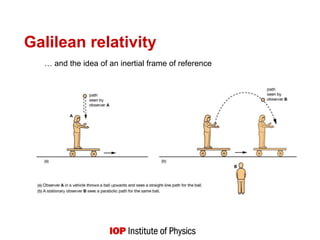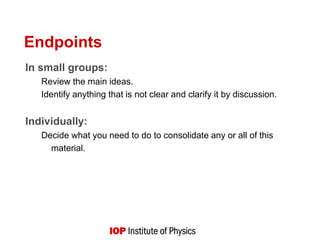This document provides an overview of teaching motion (kinematics) along a line. It defines key concepts like speed, velocity, and acceleration. It discusses common student misconceptions and challenges with graphs and equations. Examples of motion are given that could motivate students, like falling objects. The document emphasizes developing conceptual understanding qualitatively before quantitative relationships. It provides historical examples from Galileo to illustrate physics thinking and introduces equations and graphical analysis of motion.
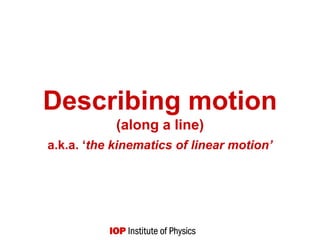


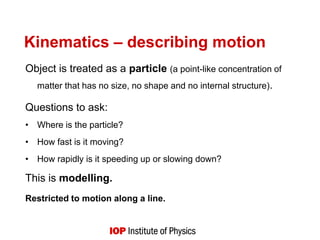




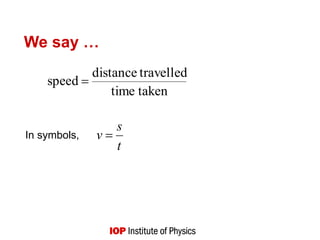



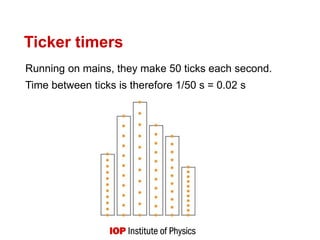

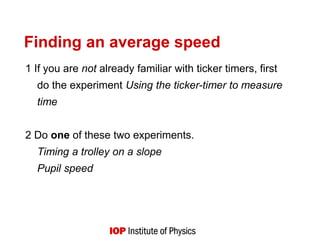





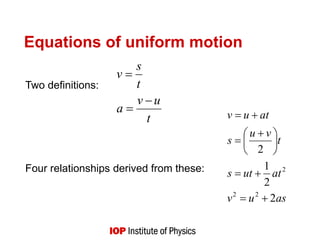


![Experiments about motion
In fours: do a few of these experiments:
Compensating for friction
Investigating free fall with a light gate
Measurement of g using an electronic timer
Finding average acceleration with a ticker-timer
Measurement of acceleration using light gates
Building a reaction tester
[from the Practical Physics website]](https://image.slidesharecdn.com/kinematics-linear-motion-230503014353-703c991f/85/Kinematics-linear-motion-ppt-24-320.jpg)


